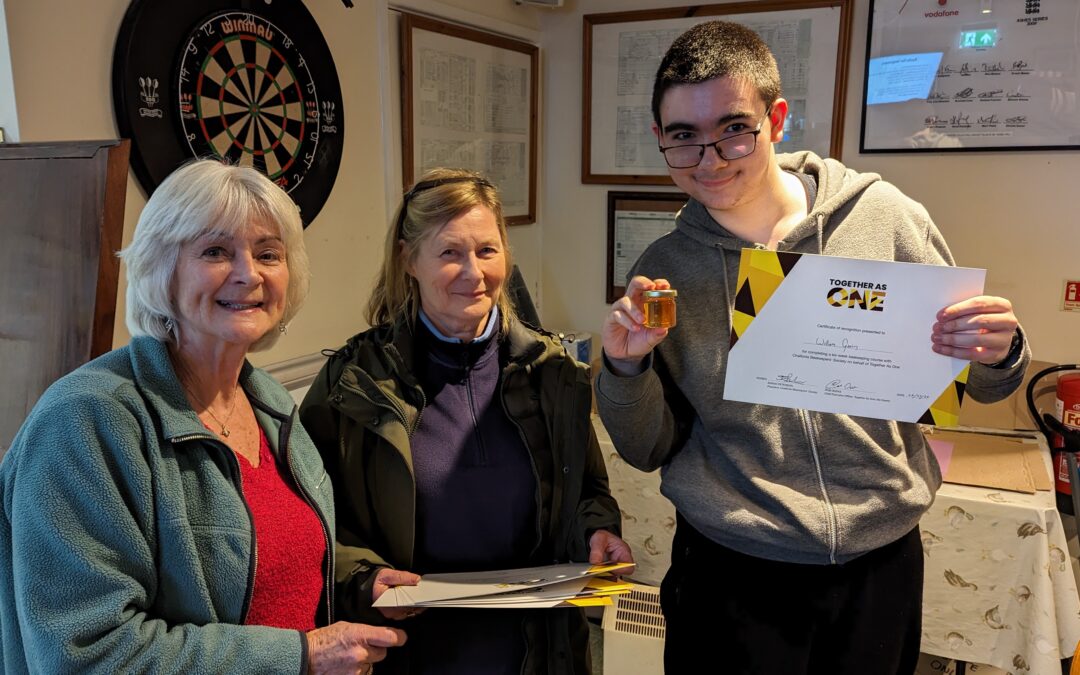2024 has been an exhilarating year for Together As One, with our beekeeping project standing out as a highlight. If you’ve been following our updates, you might remember our announcement in January about this exciting venture. In essence, after a series of enlightening environmental workshops, the young individuals we serve expressed their desire to engage in beekeeping. Their motivations were clear: they sought to aid pollinators, deepen their connection with nature, and produce honey, especially for those facing financial difficulties.
As previously mentioned, the Chalfonts Beekeepers’ Society showed exceptional interest in assisting us in expanding our knowledge. Fast forward three months, and we’ve completed the theoretical aspect of our training.
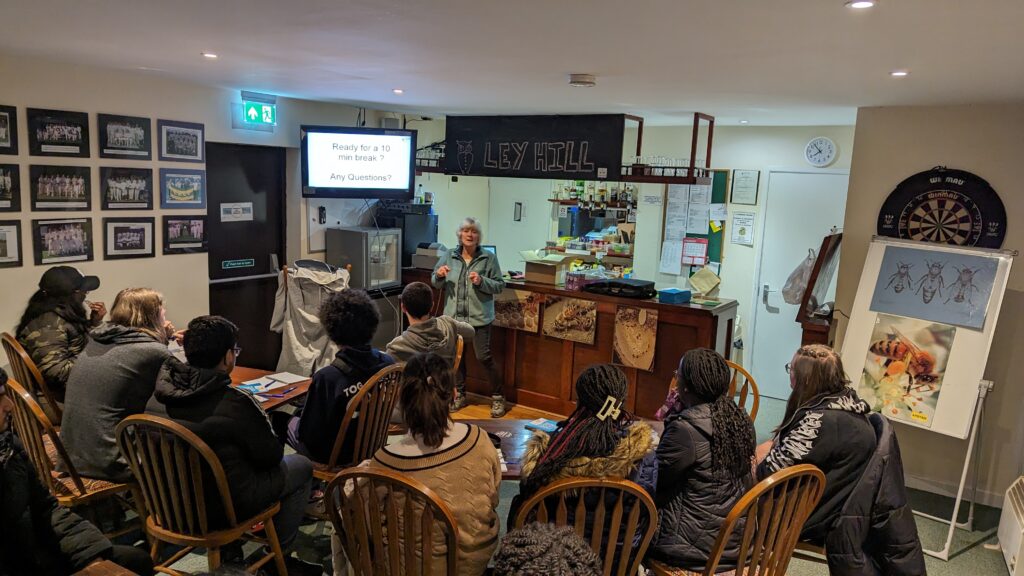
Young volunteers taking part in the beekeeping course.
Our Journey
Every Wednesday evening, our young beekeepers eagerly boarded a minibus in Slough and journeyed to Ley Hill Cricket Club in the Buckinghamshire countryside. Here, the team from the Chalfonts Beekeepers’ Society has provided us with invaluable insights into beekeeping, gradually building our expertise week by week, as detailed in Sarah Peterson’s course overview (see table below).
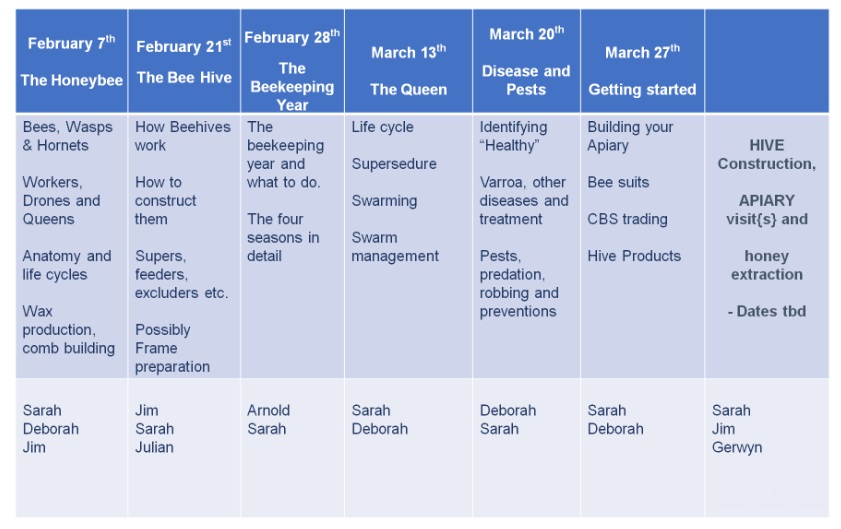
The Beekeeping Curriculum
Demography
We’re proud to say that our young beekeepers reflect the wonderfully diverse community of Slough. On average, 13 participants attended each session, with an average age of 16. Among them, we have a balanced mix of genders and a wide range of abilities, backgrounds and challenges. These have included individuals with learning disabilities, physical disabilities, poor mental health, depression/anxiety, and autism. The 16 participants come from 9 different ethnic backgrounds with mixed White British and Caribbean the most prevalent.
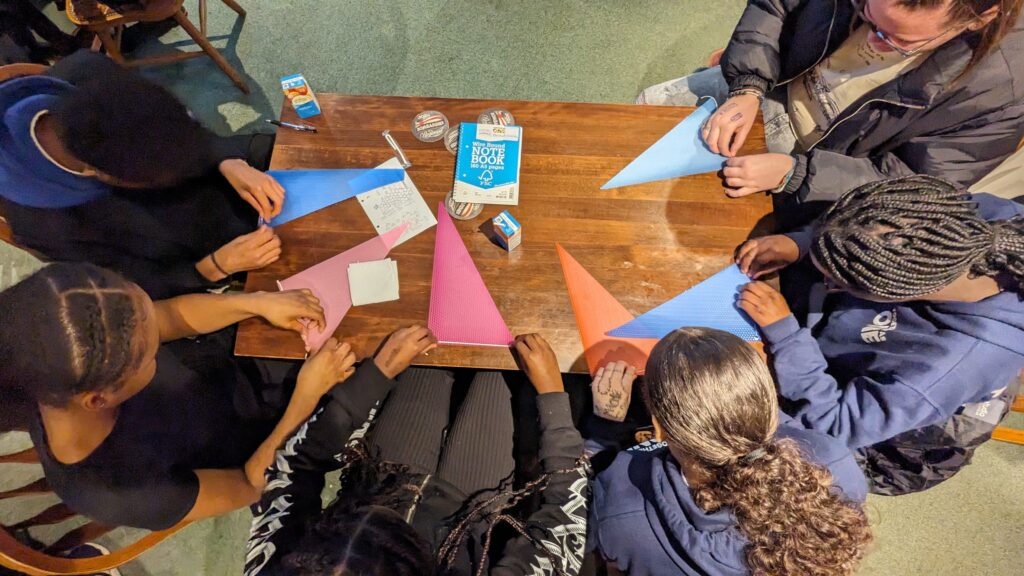
Young participants make beeswax candles
What happens in the brood box, stays in the brood box!
The training we received has helped place our beekeeping efforts within a historical context, enlightening us that our endeavours are part of a long-standing tradition refined over millennia. For instance, during one session, we delved into the concept of ‘bee space,’ pioneered by American clergyman Lorenzo Lorraine Langstroth. This concept defines the minimum distance bees require to move around and prevent sealing (typically between 4.5 mm and 9 mm).
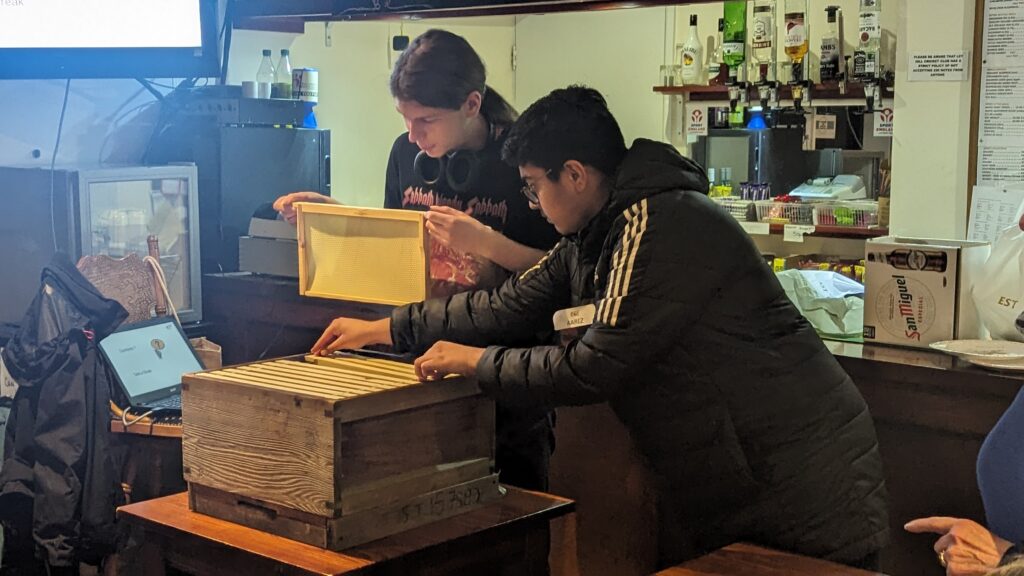
Owen and Aarez put a hive together.
The contributions of figures like Pastor Langstroth have influenced the development of hive designs with varying levels of complexity and durability. With Chalfonts Beekeepers’ Society, we’ve learned about ‘the National.’ In this design, the brood box serves as the hub of activity, where nectar is transformed into honey, and eggs develop into larvae before maturing into bees. Additionally, a Queen excluder serves its purpose by preventing the Queen from accessing the upper portion of the hive, where a super holds frames for storing honey.
Game of Drones
Bee reproduction has fascinated us. We were educated early on that there are three key types of bee: the queen, workers and drones – the former two are females and the latter are males. Drones are there for one thing only – reproduction. Because of their very limited role, they are not sustained through winter. Come Autumn, they leave the hive for the final time – apparently some leave of their own volition while others are bundled out by helpful workers!
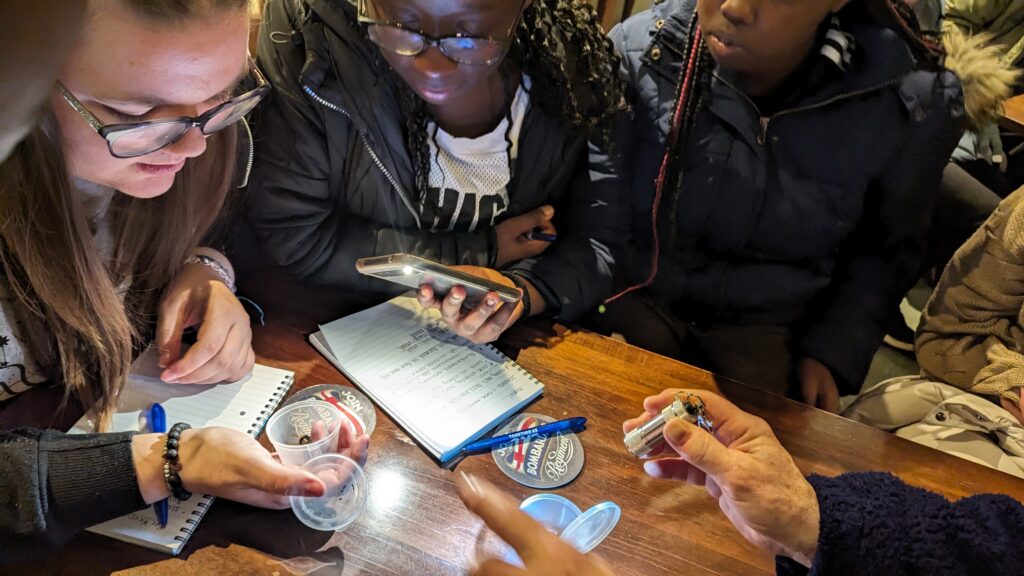
Young volunteers examine some bees.
Realising that drones are only there for one thing and the queen lays them, some of us started to shift uneasily in our seats. However, we found out the drones exist to fertilise queens from other hives. How do they locate them? They gather in Drone Congregation Areas (DCAs). What factors contribute to a successful DCA? This remains largely unknown. There are still aspects of these remarkable insects that elude our understanding.
Modelling Disagreement
One of the things about beekeeping which came across very clearly is how differences of opinion are both accepted and embraced. We were informed that if you take five beekeepers and ask them a question about beekeeping, you’ll probably get five different answers. One of the things we saw on a weekly basis is beekeepers disagreeing yet still being accepting and respectful of each other.
Next Steps
In a way, Together As One and Chalfont Beekeepers’ Society have come together to establish our own hive at Ley Hill Cricket Club – everyone has been working in unison and with a clarity of purpose which characterises how hives work. Every member of our youth group acknowledges that beekeeping is a remarkable endeavour, and we’ve been greatly inspired by our tutors, who have been so dedicated to educating us. The kindness we’ve been shown, and the evident passion and dedication of the society have left a lasting impression on us all. As we prepare to begin the practical aspect of our course, we want to express our heartfelt gratitude to everyone at the society for their generous commitment to beekeeping and their kindness toward our young volunteers.
